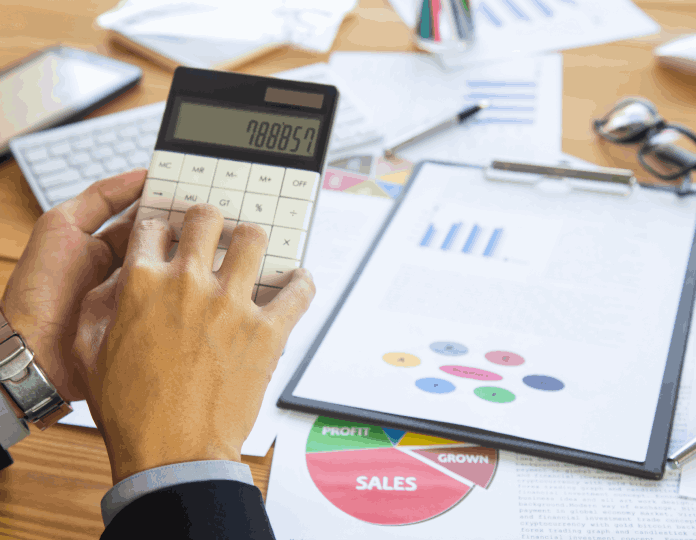Businesses frequently wish for customers to think about their brands when making decisions on what to buy. Regretfully, customers only consider a small selection of brands, incorporated into their range of considerations. The majority of brands are placed in the hold or discard sets of consumers and are not included in their consideration sets. As a result, to transfer their brands from customers’ hold or reject sets to their consideration sets, companies must draw attention from consumers and modify brand attitudes and buying intentions.
Sales promotions are a common tool used by marketers to raise consumer perceptions of the value of what they sell and, consequently, sales volume. Sales promotions continue to account for a sizable amount of marketers’ budgets. However, the majority of promotion tactics fall short of their objectives. Consequently, before their ideas are put into action, marketers are very interested in finding out if they can forecast how well their campaigns would increase customer buy intentions.
Also Read: How to Deal with Imposter Syndrome
Why do Consumers Go for Deals While Shopping?
Discounts might appear to be rather easy. Who doesn’t like to save money, after all? However, discount psychology is more complex than simply enjoying a fantastic offer or making use of package discounts. Researchers have identified several psychological drivers that attract consumers to particular kinds of promotions and persuade them to make a purchase. Because when buyers discover a good deal, it genuinely alters their perception and emotions.
In one study, individuals experienced sensations of excitement, joy, satisfaction, and other favorable outcomes after receiving a significant discount. These results were validated by researchers in a different study, which found that recipients of a discount had higher levels of oxytocin, the hormone known as the “feel good” hormone. Compared to when they received an actual present, this post-discount rise in good emotions was greater. Discounts, however, can negatively impact your brand’s customer perception of value even while they increase sales and give buyers a positive shopping experience. Therefore, it is important to employ the appropriate pricing techniques for the appropriate clients at the appropriate times.
Strategies For Making Discount Offers
1. Using the Rule of 100
Jonathan Berger, a marketing professor, gave the “Rule of 100” to better understand how customers perceive a percentage discount vs. a money-off discount promotion.

According to his findings, a percentage discount is more tempting to customers for things under $100, whereas a money-off discount is more effective for items beyond $100. This is due to psychology’s framing principle, which says that a percentage off a small-ticket item appears to be a larger bargain than a few dollars. As a result, while assuming whether to advertise a percentage discount or a cash-back offer, pricing can be considered to increase success.
According to psychologist Farhana Nazneen, it’s a part of human behaviour. Sometimes some people get happy by buying overpriced things without discounts, but in most of cases, people prefer to buy when products are on sale or discounts. This makes a person happy because he/she thinks that it has saved some amount of money and gives mental satisfaction. Discounts also affect people’s mental health because when they hear that term they tend to buy more and more and become shopaholics and later on regret for buying excessive stuffs. Because of this many people face financial crisis and this puts a negative impact on their mental health.
Also Read: The psychology behind sales
2. Protecting the Perceived Value
Discounting can have an adverse impact on a brand’s perceived value, particularly when the customer’s intent to buy is low. According to research, when jeans are discounted, customers place a higher value on them. However, discounts on luxury things can make them less attractive since they are out of season or less popular. To avoid this, businesses should consider their consumers’ intent when developing discount pricing methods and refrain from offering excessive discounts. The initial price acts as the anchor for judging the quality of an item, and a study implies that luxury sellers should exercise caution when offering excessive reductions. As a result, not every product should be offered a significant discount in some circumstances.
3. Mindset of Scarcity Vs. Urgency of Consumers
FOMO, or the fear of missing out, is a principle that drives people to act now rather than later in order to escape the anguish of FOMO. This principle underpins scarcity and urgency sales methods. Flash sales instill a sense of urgency in buyers, encouraging them to act quickly to avoid paying full price later. Low-stock or limited-inventory deals foster a scarcity mindset, prompting customers to act before it’s too late. Combining both techniques, such as a flash sale of inventory close-outs, can maximize the FOMO effect by increasing conversions while also clearing inventory.
4. The Font Size
According to research, font sizes can have an important effect on how appealing a sale is to shoppers. A lower text size might make an offer seem greater, whilst a higher font size can make it appear smaller. A lower sale price makes customers feel like they’re paying less for the goods, whereas a higher discount may make them feel like they’ve gotten a better bargain. A study discovered that people who saw a lower discount price thought the skates were less expensive, making them more likely to purchase. When testing discounts, consider reducing the font size of the sale price while raising the font size of the advertised discount.
Also Read: Use of Psychology in Advertising and Marketing

5. Keeping the Math Easy for Consumers
The ease of calculating discounts has a substantial impact on consumer incentives to make purchases. According to research, individuals dislike difficult calculations and prefer larger discounts. As a result, simplifying discounts can improve their effectiveness. Understanding the psychology of discounts is critical because how people perceive them has a huge impact on their willingness to act. Therefore, it is crucial to avoid confusing individuals with math issues.
6. Payment Offer Intervals
According to Harvard Business Review research, monthly payments benefit businesses by increasing consumption rates and customer retention. Monthly payments are more likely to be used and rewarded, thus more companies are adopting subscription arrangements. However, annual payouts can wane over time, making it less likely that members will renew. This can result in decreased revenue recapture in the following years, which could be linked to the discounted yearly plan. As a result, a discount may not be beneficial to both the firm and its customers.
Also Read: Psychology Behind Holiday Stress
According to psychologist Madhumanti Majumdar, discounts can create a sense of urgency or excitement, encouraging people to make a purchase they might otherwise hesitate on. When a brand provides discounts regularly, it creates a better relationship with the customers. Customers are more loyal towards a brand when a reward program or a discount system is offered making them feel special. Many people find discounts exciting and keep looking for the best deals on products with an enthusiastic approach. There are two types of people in society, some people are able to directly buy a product at MRP whereas some people look forward to a discount on the product that they have been waiting to purchase which they couldn’t earlier due to the high price.
7. The Psychology of Freebies
Freebies may attract customers, but they can also harm brand reputation and reduce profit margins if not managed properly. The term “free” is highly motivated and can influence people’s decisions. The zero-price effect encourages consumers to react more emotionally to discounts, making them want them more. Businesses can use the word “free” to attract clients, offering free welcome gifts, shipping, returns, or samples, which can be enough to inspire people to buy from your business.
References+
- Bayer, R.-C., & Ke, C. (2013). Discounts and consumer search behavior: The role of framing. Journal of Economic Psychology, 39, 215–224.
- Teng, L. (2009). A comparison of two types of price discounts in shifting consumers’ attitudes and purchase intentions. Journal of Business Research, 62(1), 14–21.













Leave feedback about this